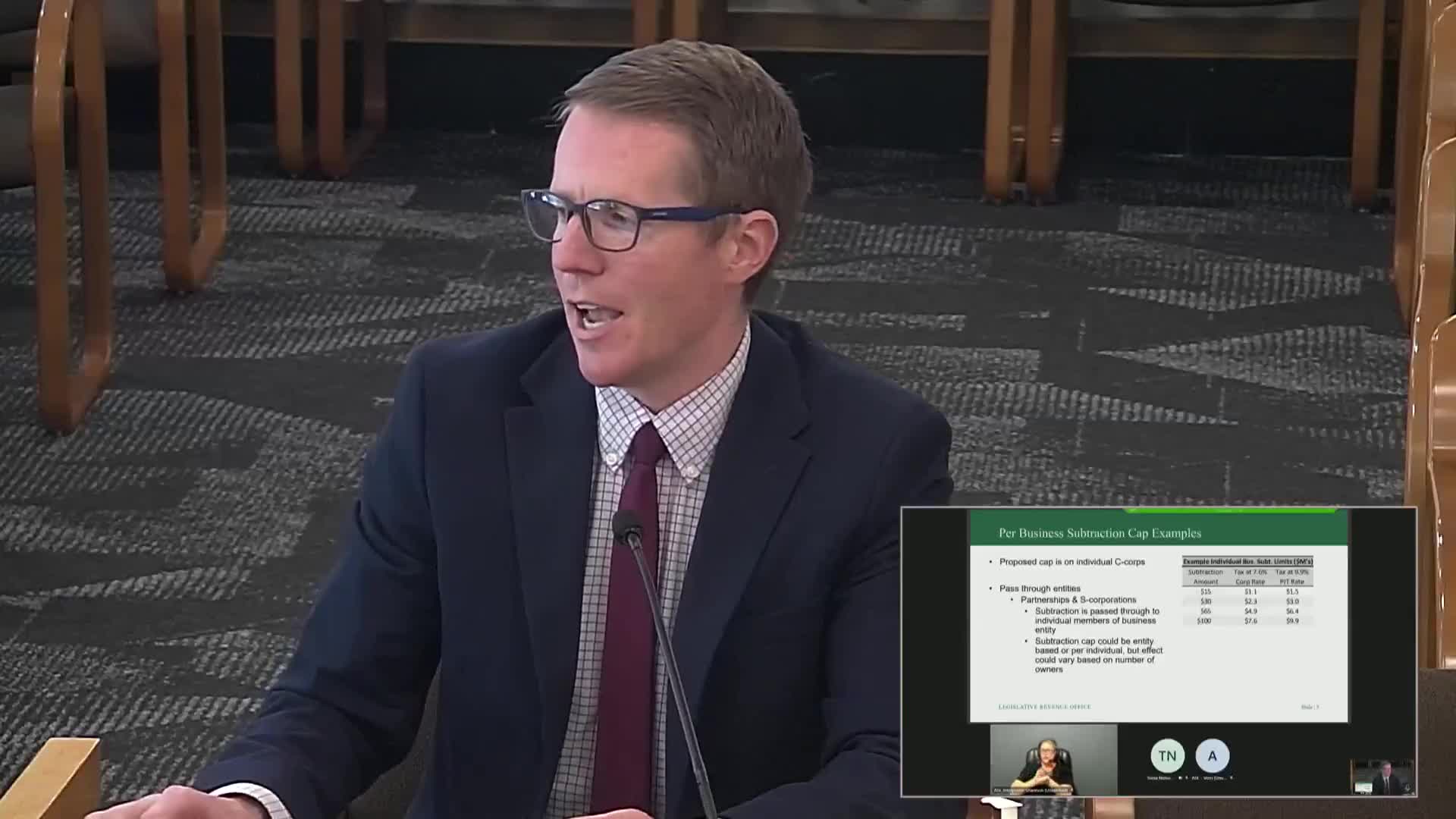Oregon House Bill 2084 mandates tax compliance for state contractors
May 29, 2025 | Revenue, House of Representatives, Committees, Legislative, Oregon
This article was created by AI summarizing key points discussed. AI makes mistakes, so for full details and context, please refer to the video of the full meeting. Please report any errors so we can fix them. Report an error »

In a recent meeting of the Oregon House Committee on Revenue, significant discussions centered around tax policies and accountability for public contractors. The meeting, held on May 29, 2025, addressed two key pieces of legislation: House Bill 3,049 and House Bill 2,084.
House Bill 3,049 focused on the implications of a proposed subtraction cap for tax benefits available to businesses. The cap, set at $15 million for individual businesses, would limit potential tax benefits to $1.1 million for C corporations and $1.5 million for personal income tax filers. Committee members expressed concerns about how this cap could affect various businesses differently, depending on their size and the incentives they utilize. The discussion highlighted the need for clarity on how these tax benefits are distributed and the importance of transparency in the state’s tax incentive programs. Members noted that understanding the cumulative impact of multiple incentives—often referred to as "stacking"—is crucial for assessing the effectiveness of these policies.
The second major topic was House Bill 2,084, which aims to ensure that public contractors demonstrate tax compliance as a condition for receiving state contracts. This bill was prompted by a notable case reported by the Oregonian, where a contractor with $70 million in state contracts was found to be over $900,000 in arrears on state taxes. The proposed legislation seeks to hold contractors accountable for their tax obligations, ensuring that taxpayer money is not awarded to those who are not fulfilling their financial responsibilities to the state.
The discussions during the meeting underscored the committee's commitment to enhancing transparency and accountability in Oregon's tax incentive programs and public contracting processes. As these bills move forward, the committee will continue to engage with stakeholders to refine the proposals and address any concerns raised during the meeting. The outcomes of these discussions could have significant implications for both businesses and the state's fiscal health in the coming years.
House Bill 3,049 focused on the implications of a proposed subtraction cap for tax benefits available to businesses. The cap, set at $15 million for individual businesses, would limit potential tax benefits to $1.1 million for C corporations and $1.5 million for personal income tax filers. Committee members expressed concerns about how this cap could affect various businesses differently, depending on their size and the incentives they utilize. The discussion highlighted the need for clarity on how these tax benefits are distributed and the importance of transparency in the state’s tax incentive programs. Members noted that understanding the cumulative impact of multiple incentives—often referred to as "stacking"—is crucial for assessing the effectiveness of these policies.
The second major topic was House Bill 2,084, which aims to ensure that public contractors demonstrate tax compliance as a condition for receiving state contracts. This bill was prompted by a notable case reported by the Oregonian, where a contractor with $70 million in state contracts was found to be over $900,000 in arrears on state taxes. The proposed legislation seeks to hold contractors accountable for their tax obligations, ensuring that taxpayer money is not awarded to those who are not fulfilling their financial responsibilities to the state.
The discussions during the meeting underscored the committee's commitment to enhancing transparency and accountability in Oregon's tax incentive programs and public contracting processes. As these bills move forward, the committee will continue to engage with stakeholders to refine the proposals and address any concerns raised during the meeting. The outcomes of these discussions could have significant implications for both businesses and the state's fiscal health in the coming years.
View full meeting
This article is based on a recent meeting—watch the full video and explore the complete transcript for deeper insights into the discussion.
View full meeting
